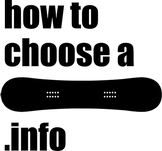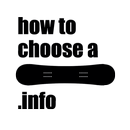Snowboard Flexibility - read on to know how to choose it
When we talk about a snowboard flexibility we refer to the longitudinal flexibility, which has the most effect on the overall board performance. There is also the torsional flexibility.
The flexibility of a snowboard is influenced by the weight and height of the rider, the same board in different sizes will have different flexibilities. So choose your snowboard size wisely to get the flex that your chosen board claims. The flexibility has great influence on how a snowboard will perform, defining the conditions and type of riding a board is made for, specially the flexibility amount, but also the flexibility distribution.
This is where most boards get expensive. We simplify the flexibility to a number from 1 to 10 but it has more to it, much more. About 90% of the boards flexibility depends on it's core, on the core's materials and "technologies". Stick with the table if you're a beginner or maybe if you're an intermediate rider, but to really have an idea of how a board will ride without doing it and get a board that will help you tune your movements, you must know some of this stuff. If you're and advanced/expert rider who's looking more to fine tune movements than to get new ones, this page may make you happy.
Flexibility Amount
Brands usually rate their boards flexibility from 1 to 10, being soft the 1, middle flexibility the 5 and hard the 10. One snowboard rated 5 on flexibility by one brand may softer or harder than other board also rated 5 by other brand.
Soft snowboards are easier to turn and to maneuver with, specially at slower speeds, that makes them great for jibbing, buttering, freestyle in general, and also for all beginners.
Hard snowboards can handle speed and big landings better, which makes them great for freeride, carving on groomed, ride powder, pipe and to go big.
Middle flex. snowboards are the most used because they perform well in a wider range of situations than a really soft or a really hard board will. Also they are the natural step between the beginner's soft snowboard and the hard stick, so, if you're not any more a beginner and not yet a pro, there's a good chance you will end up with a middle flex. snowboard.
Flexibility Distribution
The flexibility can also be twin or directional. Along with the size, the shape and the inserts position, this is why some boards are called "twin" or "directional twin" and others "true twin".
Twin flexibility
The same flexibility in both sides, from middle to tip and from middle to tail. It may differ from the center to the tips, as long as it's equal in both sides.
Present in most boards being sold and in all boards named "true twin".
It makes the board just as good in switch as it is in regular, like the twin shape does. Mostly desired for freestyle snowboard.
Example of a snowboard with no changes in the flexibility, twin flex.:

Example of a snowboard with softer tips, twin flex.:

Directional flexibility
It can be a softer tip to facilitate the turn initiation with a stiffer tail to carve better and to help keep control, or any other "hack" to help the board excel in one direction.
Present in some boards named "twin" or "directional twin" and "directional". Helps the snowboard to excel in one direction, like the directional shape and the set back inserts. Mostly used in freeride, all mountain and powder boards, but also in freestyle snowboards to make twin boards that ride a bit better forward.
Example of a snowboard with softer nose, directional flex.:

Torsional Flexibility
The skiers envy us for this one, as it allows for so much playfulness and control. And, whether a bit or a lot, all the boards have it. When you flex one ankle and extend the other with the board strapped in you will twist the board, how much will you twist it depends on it's torsional flex.
It doesn't influence the boards overall performance as much as the longitudinal flex and, maybe because of that, the manufacturers don't rate it and is usually not considered by most snowboarders when getting a new ride. However, if you are looking for a board really aligned with your riding, you should definitely pay it some attention.
Stiffer torsional flexibility
Makes the board harder to turn but a bit more accurate a higher speeds, with better edge-hold.
Softer torsional flexibility
Sharper turns are easier to do. Not so accurate and more physically demanding when going fast.
How to know if it is not rated?
How to know if it is not rated?
Put a towel on the floor, put the nose or tail of the snowboard on the towel and step on it. With both hands twist it in both directions. After you've done that with a few snowboards you will have your own mental scale.
Asymmetrical flexibility/core
Every time you jump (without a board on your feet) you do it from your toes and not from the heels, because it's easier, more controllable. Same happens on a snowboard, it is tougher to press the heel edge than it is to press the toe edge. In asymmetrical snowboards the core is usually more flexible on the heel side than on the toe side, allowing you to bend the board a bit more on heel side, giving you more precise and tighter heel turns that feel more natural than in typical symmetrical boards.
(in asymmetrical snowboards, the asymmetrical core usually comes along with asymmetrical side-cuts)


